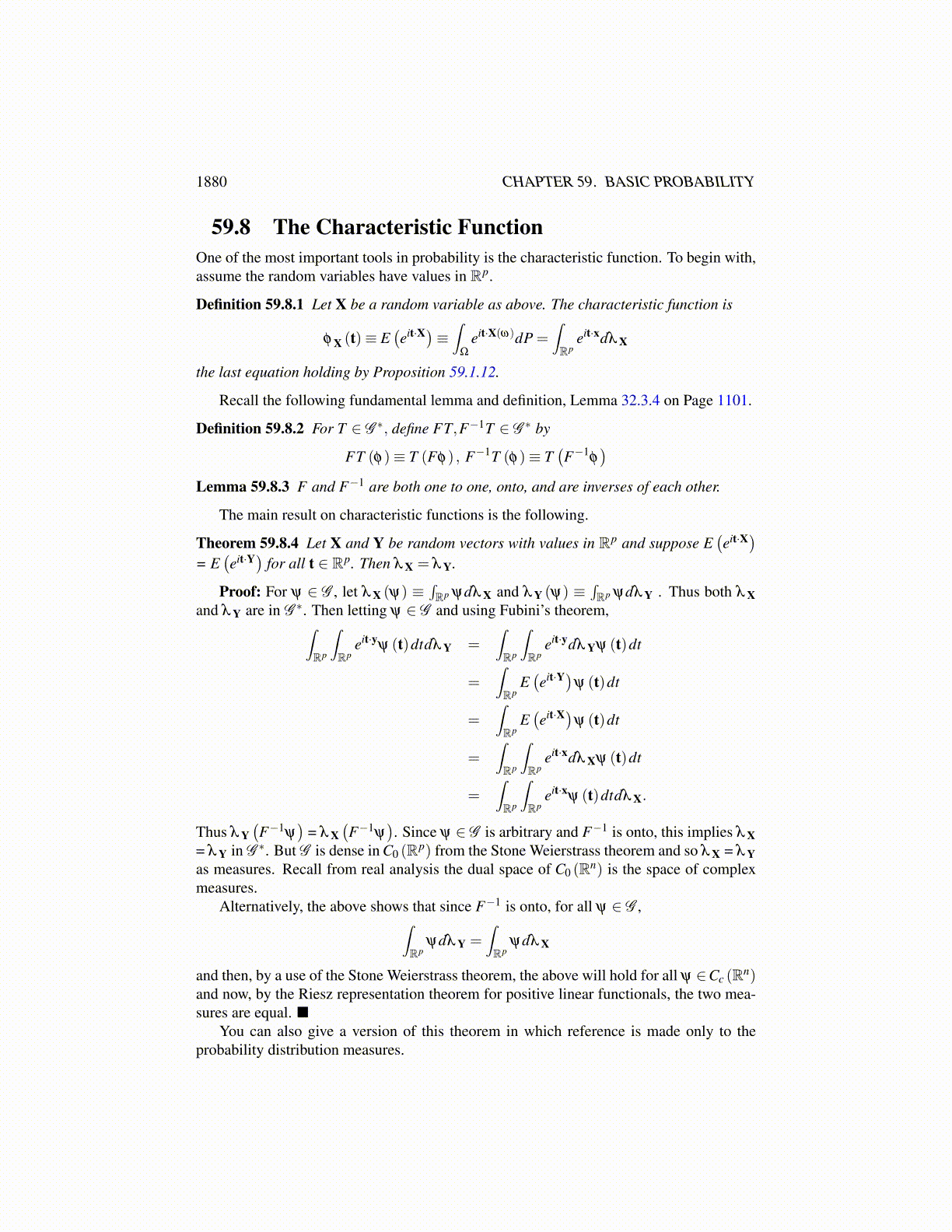
1880 CHAPTER 59. BASIC PROBABILITY
By the Borel Cantelli lemma, Lemma 59.1.2, there is a set of measure 0, N such that forω /∈ N, ω is in only finitely many of the sets,[
maxk≥m≥pn
∣∣∣∣∣ k
∑j=m
X j
∣∣∣∣∣≥ 2−n
]
and so for ω /∈ N, it follows that for large enough n,[max
k≥m≥pn
∣∣∣∣∣ k
∑j=m
X j (ω)
∣∣∣∣∣< 2−n
]
However, this says the partial sums{
∑kj=1 X j (ω)
}∞
k=1are a Cauchy sequence. Therefore,
they converge.With this amazing result, there is a simple proof of the strong law of large numbers. In
the following lemma, sk and a j could have values in any normed linear space.
Lemma 59.7.4 Suppose sk→ s. Then
limn→∞
1n
n
∑k=1
sk = s.
Also if∞
∑j=1
a j
j
converges, then
limn→∞
1n
n
∑j=1
a j = 0.
Proof: Consider the first part. Since sk → s, it follows there is some constant, C suchthat |sk|<C for all k and |s|<C also. Choose K so large that if k ≥ K, then for n > K,
|s− sk|< ε/2.∣∣∣∣∣s− 1n
n
∑k=1
sk
∣∣∣∣∣≤ 1n
n
∑k=1|sk− s|
=1n
K
∑k=1|sk− s|+ 1
n
n
∑k=K|sk− s|
≤ 2CKn
+ε
2n−K
n<
2CKn
+ε
2Therefore, whenever n is large enough,∣∣∣∣∣s− 1
n
n
∑k=1
sk
∣∣∣∣∣< ε.